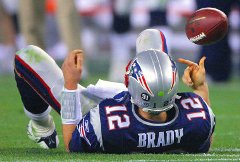Independent Wealth Management
Who scrutinizes your investments, designs and tests your retirement and education plan, searches for new investment ideas, patrols insurance agents and mortgage brokers, shows you strategies designed to reduce your investment costs and income taxes, monitors your 401(k), promptly responds to your email, provides one monthly statement, day-to-day net performance across all of your accounts and does all of your paperwork...We do!
Entries in Behavioral Finance (7)
Investors, Beware the Herd
 If you’ve ever seen it, it’s one of those things you’ll never forget – the mass migration of hundreds of thousands of wildebeest moving across the plains of Africa in search of a fresh feeding area. It’s magnificent to watch. Of course, we know why animals herd together – it’s because there’s safety in numbers. If a wildebeest wanders off by itself, it is more likely to be taken by a predator. But, when traveling with thousands of its compadres, there’s less of a chance that will happen. But, what works well for the wildebeest doesn’t necessarily work well for humans. True, there still may be safety in numbers, but have you ever seen a herd stampeded off a cliff? Unfortunately, that what happens to investors when they join the herd.
If you’ve ever seen it, it’s one of those things you’ll never forget – the mass migration of hundreds of thousands of wildebeest moving across the plains of Africa in search of a fresh feeding area. It’s magnificent to watch. Of course, we know why animals herd together – it’s because there’s safety in numbers. If a wildebeest wanders off by itself, it is more likely to be taken by a predator. But, when traveling with thousands of its compadres, there’s less of a chance that will happen. But, what works well for the wildebeest doesn’t necessarily work well for humans. True, there still may be safety in numbers, but have you ever seen a herd stampeded off a cliff? Unfortunately, that what happens to investors when they join the herd.
Humans naturally want to belong to a community – a group of people with shared cultured and socio-economic norms. But, in doing so, we still prize our individuality and sense of responsibility for our own welfare. Why is it that, in investing, humans are induced into following the herd – whether it is at the top of a market rally or over the cliff in a market crash? The answer may lie in the natural human tendency...
Overconfidence & Attribution Bias
 Dream road is littered with great ideas that were going to solve everything. Many proposals were so sure to be successful that money fell out of the sky to fund them. In sports, talent at times can be so dominant that any opposition is a futile. Remember when the New England Patriots were so dominant that the New York Giants had no chance in the SuperBowl?
Dream road is littered with great ideas that were going to solve everything. Many proposals were so sure to be successful that money fell out of the sky to fund them. In sports, talent at times can be so dominant that any opposition is a futile. Remember when the New England Patriots were so dominant that the New York Giants had no chance in the SuperBowl?
I’ve learned to be rather quiet about absolute convictions. Loud conviction likes to make a mockery of its believers. How did Eli Manning make that throw? It was as if the gods of irony all agreed to make bumbling fools of the experts. It just goes to show how dangerous overconfidence can be. Overconfidence will have you ordering the championship cake before the first quarter starts...only to give it embarrassingly to the stadium security staff later that evening.
No one wants to believe they may be in their own way, especially when it comes to investing. Yet, research has shown there are several common biases that can cause an investor to make decisions based more on emotion, than on strategy or science. This can impair investment returns...and in some cases, a total loss of capital.
Allocating Capital and Bias
 Why do investors fall in and out of love with stocks at exactly the wrong time? Strong recent performance (“momentum”), fleeting fads and promises of huge growth potential are irresistibly compelling to inexperienced investors as they push their valuations up to unsustainable levels. After investors have experienced negative earnings surprises (which is inevitable), they overreact once more to the prospect of lower growth. What is the driving force behind this? Why do companies doing so well suddenly disappoint? Why do shares which outperform in the short term underperform over longer periods? The answers lay both in the allocation of capital and associated psychological biases or tendencies.
Why do investors fall in and out of love with stocks at exactly the wrong time? Strong recent performance (“momentum”), fleeting fads and promises of huge growth potential are irresistibly compelling to inexperienced investors as they push their valuations up to unsustainable levels. After investors have experienced negative earnings surprises (which is inevitable), they overreact once more to the prospect of lower growth. What is the driving force behind this? Why do companies doing so well suddenly disappoint? Why do shares which outperform in the short term underperform over longer periods? The answers lay both in the allocation of capital and associated psychological biases or tendencies.
Companies do not exist in a vacuum. Their fortune is determined, to some extent, by the activities of other businesses. Relating a company to its environment is the essence of determining sustainable competitive advantage; which some believe is the prime determinant of investment success when combined with purchasing an interest below a conservative estimate of intrinsic value. In the book Competitive Strategy by Professor Michael Porter of Harvard Business School, he outlines five forces which influence a firm’s strategic position.
Loss Aversion, Anchoring and Hope

How could this be? While there are a number of contributing factors for the significantly reduced individual investment returns, many of the most common behavioral causes point to loss aversion, anchoring and mental accounting as most damaging. As investors, we don’t enter the markets to purposefully earn below average returns. Nevertheless, many fail to achieve the desired returns they first had in mind.




